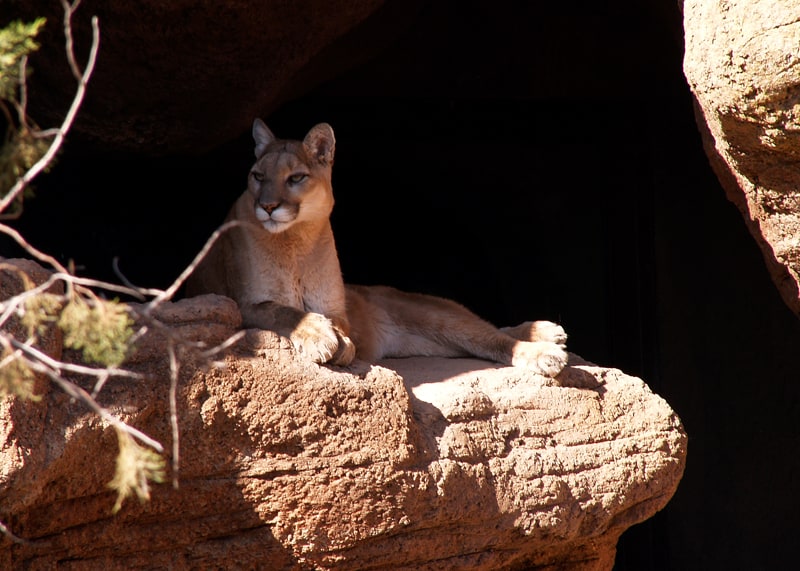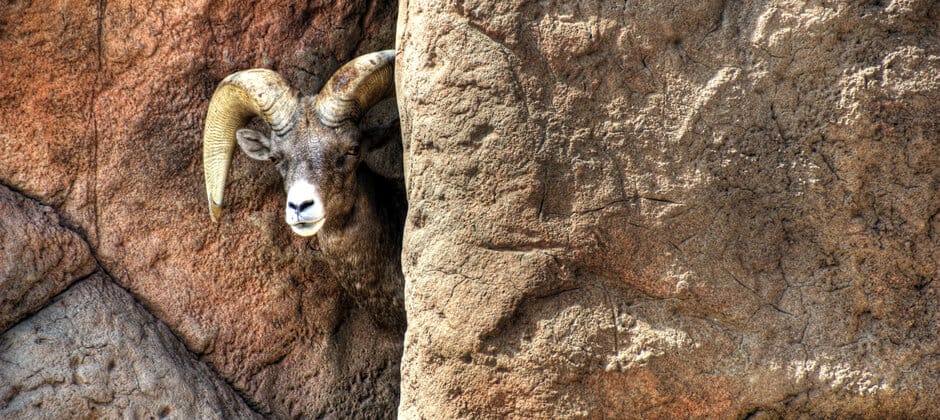Share this article
JWM: Fire suppression may help cougars prey on bighorns
Decades of fire suppression may be the reason that mountain lion predation is taking a bite out of bighorn sheep numbers in parts of Arizona.
Bighorn sheep (Ovis canadensis) evolved alongside mountain lions (Puma concolor) in the Santa Catalina Mountains and in the Arrastra Mountain Wilderness area of Arizona. But the ungulates have declined due to urbanization, disease, human recreation and changes in habitat conditions. A current management concern for desert bighorn includes the influence of mountain lion predation on sheep population persistence.
The potential for mountain lions to affect bighorn sheep is controversial in some ways. Bighorns and mountain lions evolved together, leading to questions about why mountain lions are able, in some instances, to limit bighorn sheep population growth or drive small populations to extirpation. Understanding the predator-prey relationship between mountain lions and bighorns is critical to their management.
Andrew Jones, a TWS member and terrestrial research program manager at the Arizona Game and Fish Department, and his colleagues took a closer look at the ecological relationship between the sheep and mountain lions in the area.
In a study published recently in the Journal of Wildlife Management, the researchers tracked bighorn sheep reintroduced into the Santa Catalina Mountains near Tucson and the state-managed Arrastra Mountain Wilderness area near Phoenix. From 2013-2017, the researchers tracked 103 reintroduced bighorn sheep fit with radio-tracking collars. Jones and his colleagues recorded sheep group sizes and took note of the type of landscape cover around them. They also recorded the causes and circumstances surrounding of deaths to determine the factors that might affect mountain lion predation.

Mountain lions may have an outsized impact on bighorns due to past fire suppression strategies.
Credit: Jöshua Barnett
The researchers found that bighorn sheep tended to prefer open areas with a large field of view—likely so they could keep an eye on their surroundings in case of encroaching predators.
The amount of vegetation around, the researchers found, affected the sheep’s visibility around them. “We suggest that sheep are choosing areas that have a greater viewshed, or less obstruction,” Jones said. Historically, some areas of bighorn sheep habitats were fire-adapted, resulting in fewer areas for mountain lions to hide and ambush their prey. But decades of fire suppression have resulted in a high proportion of great spots to conceal mountain lions.
“Fire suppression may have led to decrease in habitat quality,” Jones said.
Researchers don’t yet know whether that means sheep are also getting preyed on more near brushy areas. But one way to increase suitable habitat could be increasing prescribed burns or otherwise clearing brushy areas, Jones said. “Fire might improve some of the habitat quality, in fire-adapted areas,” he said.
The researchers also found that larger herds of sheep were killed less often by mountain lions—possibly because having more individuals around may improve the vigilance of the group as a whole. Jones said that wildlife managers can take advantage of this by translocating larger groups of sheep together in the future to decrease the likelihood of predation. Managers may also augment smaller populations with reintroduced animals to reduce predation among those herds overall.
Finally, rugged areas may also provide some sort of protective measure for the bighorn sheep, which can manage the terrain a little better than mountain lions.
This article features research that was published in a TWS peer-reviewed journal. Individual online access to all TWS journal articles is a benefit of membership. Join TWS now to read the latest in wildlife research.
Header Image: Desert bighorn sheep prefer a clear view of their surroundings. Credit: Patrick Theiner








